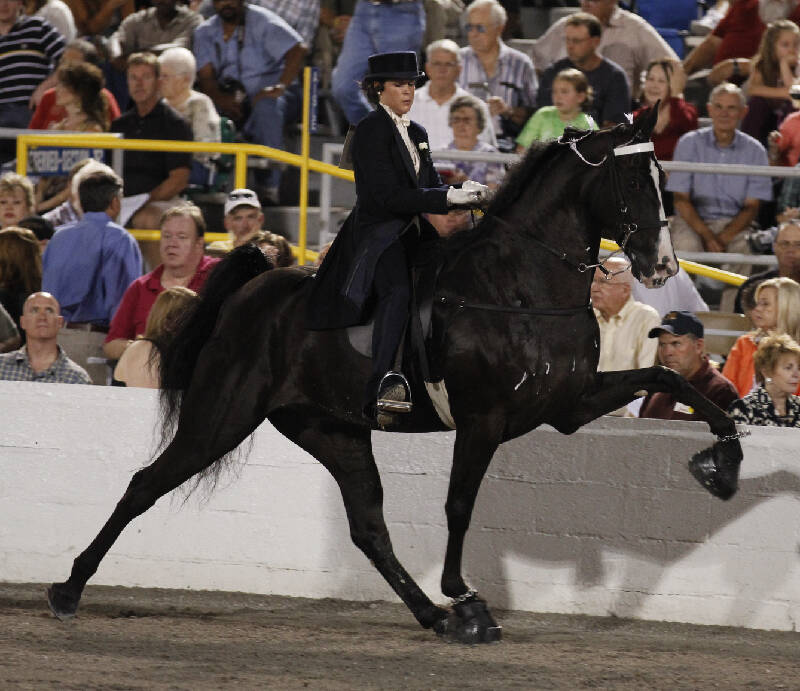Pretty, right? Well, it would be if it weren’t for the torture to which these gentle, high-gaited horses are subjected. This is the Tennessee Walking Horse and for the last 100 years they have been inhumanely abused to achieve this unnatural high gait, also known as the “Big Lick.” While a very small group of people in the US refer to the Big Lick as a tradition (much like some people in Spain consider bullfighting a form of art, inseparable from Spain’s culture), most people will agree that this practice is barbaric and must stop.
To achieve the desired “Big Lick” effect, horses first get their legs wrapped in corrosive sheets (mustard oil, diesel, and kerosene are used), followed by tightly wrapping heavy chains around their front legs. Thick horseshoes are attached to their hooves before “shows.” The sole purpose of this method (known as soring) is to cause unbearable pain to the horse and force it to walk unnaturally. Tennessee Walking Horses undergo this abuse from a very young age, practically from the moment they can confidently walk. Horses aren’t only affected physically by this, but also psychologically. They are left alone in small and dark stalls for countless days. It is also common to see horses laying and moaning in pain at soring farms, waiting for the skin on their legs to burn off from the acid, causing them unbearable pain. Chains are then tied onto their legs, rubbing their skin and further irritating their legs. The poor horses have no other choice but to exaggerate their gait when walking as a way of fighting the pain; if they misbehave they will be hit and ridden even harder. The horses are trained excessively before shows, aren’t allowed to interact with other horses, and can’t graze grass on pastures. Right before a show, they get their uncomfortable thick, heavy, and stacked horseshoes, which force the horse to stand at an unnatural angle, increasing their suffering. Their gait is shown off for a few minutes, receiving a round of applause from people who can’t see the pain and sadness in the horse’s eyes. After the show, the cycle is repeated again and again until the next show. The horses go through so much stress that it is common for them to develop colic, extreme abdominal pain, at an extremely young age and eventually die.
Little has been done to protect this horse breed from this cruelty. Congress passed an act in the early 70s, called The Horse Protection Act, whose aim was to completely ban the practice of soring. It stated that all horses participating in Tennessee Walking Horse shows were to be checked by accredited inspectors for any signs of abuse (scars on legs, flinching when palpating their legs, or stacked horseshoes), however, “Big Lick” enthusiasts quickly found their way around this rule. Accredited inspectors were a rarity, their place taken by insiders from the industry who would inspect and accept sored horses. Furthermore, trainers started pinching horses in other places while they were being inspected so they wouldn’t notice the pain in their legs. Essentially, the law didn’t do its job at protecting these poor horses from systematic abuse. Some Southern Americans argue that this practice is an undeniable part of Tennessean culture since the Tennessee horse breed started there and this practice was also born there. However, where is the line between cruelty and tradition? Is it normal to make a horse go through so much pain just because we think it’s beautiful? It’s disappointing how nothing can be done since this is a moral decision on the part of each person in this industry, and if they don’t see how wicked this is, then they can’t and won’t be stopped.

